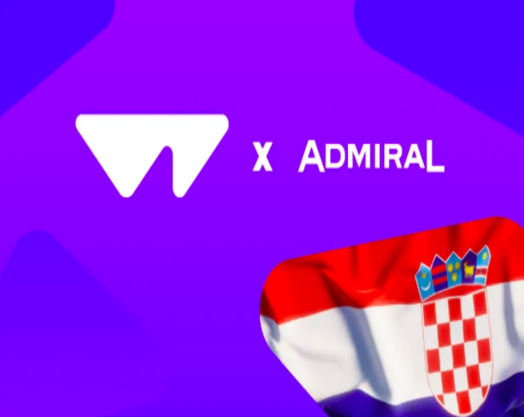EOS (EOS)
Price
$0.16 0.11%
The History of EOS
A Journey Toward Decentralized Innovation
The story of EOS is one of ambition, technological advancement, and community-driven evolution. Launched in 2018, EOS entered the blockchain world with the goal of addressing some of the key limitations faced by earlier blockchain platforms, particularly in terms of scalability and transaction speed. Its journey began years before its public launch, with a vision to create a blockchain ecosystem capable of supporting large-scale decentralized applications (dApps) while offering near-instant transaction processing with minimal costs.
The EOS project was originally initiated by the company Block.one, founded by Dan Larimer and Brendan Blumer, both of whom were well-known figures in the blockchain space. Larimer had already gained recognition as the creator of other blockchain projects, such as BitShares and Steemit, which aimed to innovate the way digital platforms could function through decentralized means. Block.one was established to further this vision by developing EOS, a platform that would build on the lessons learned from these previous ventures but offer a more scalable and efficient solution.
From its inception, EOS attracted considerable attention due to its promise of creating a third-generation blockchain network. Unlike Bitcoin and Ethereum, which used proof-of-work (PoW) consensus mechanisms, EOS adopted the Delegated Proof of Stake (DPoS) model. This mechanism was designed to address the scalability issues that PoW-based systems struggled with, allowing EOS to process thousands of transactions per second—a feature that set it apart from many of its competitors. DPoS also introduced a more democratic governance structure where token holders could elect “Block Producers” (BPs) to validate transactions and make decisions about the future direction of the network.
In the years leading up to its launch, EOS underwent one of the most notable Initial Coin Offerings (ICO) in cryptocurrency history. Between June 26, 2017, and June 1, 2018, Block.one raised a staggering $4.1 billion through the sale of EOS tokens, which at the time was the largest ICO ever conducted. This massive funding round drew attention from investors, developers, and the broader blockchain community, solidifying EOS as one of the most highly anticipated blockchain projects in the world. Despite the substantial capital raised, the ICO also generated its fair share of controversy, particularly regarding the transparency of the process and the use of funds, but it ultimately paved the way for EOS to build the necessary infrastructure to power its ecosystem.
The official launch of the EOS mainnet on June 14, 2018, marked a significant milestone for the blockchain industry. Unlike other blockchain platforms that had to rely on miners to validate transactions, EOS’s DPoS system allowed for a more efficient process with a focus on high performance. The network went live with the promise of being able to handle millions of transactions per second, a feature that would theoretically make it the go-to platform for decentralized applications that require high throughput.
However, the launch of the EOS network was not without its challenges. One of the initial obstacles the network faced was the process of selecting the Block Producers who would validate transactions. This process was heavily criticized for being too centralized, as it relied on the voting power of token holders, which in turn led to accusations of power being concentrated in the hands of a few large holders. Nevertheless, the EOS community continued to evolve, and the network underwent several updates and improvements to address these issues.
In the years following its launch, EOS’s development was characterized by continuous upgrades and enhancements aimed at optimizing the network's performance, usability, and security. While the platform initially received praise for its speed and scalability, it also faced criticisms regarding its centralization and governance issues. Many in the community felt that the influence of large stakeholders, particularly in the selection of Block Producers, was not in line with the decentralization ideals that many blockchain enthusiasts hold dear.
A turning point came in August 2021 when the EOS Network Foundation (ENF) was established. The foundation was created to help shift the governance of the EOS network away from Block.one, which had been at the center of the project since its inception. This move was significant because it marked the end of the direct involvement of Block.one in the network's governance, allowing the EOS community to regain control over the future of the blockchain. Yves La Rose, a key figure in the EOS community, emerged as a leader in this new chapter, overseeing the growth of the EOS Network Foundation and guiding the platform into a more decentralized era.
The formation of the ENF also led to the development of a more open and transparent approach to the EOS network’s growth. By creating an independent entity that focused on supporting the network’s expansion and development, EOS was able to better align with the values of decentralization, community involvement, and transparency. This shift in governance was widely seen as a necessary step to ensure that EOS could maintain its competitive edge in the ever-evolving blockchain landscape.
Today, EOS continues to be a prominent player in the blockchain space, offering a unique combination of scalability, speed, and developer-friendly tools. Its commitment to decentralization, along with its active community of developers and contributors, has helped position EOS as a platform that can support the next generation of decentralized applications. As the blockchain space continues to mature, EOS’s ability to evolve and adapt to new challenges will likely determine its place in the future of decentralized technologies.
In conclusion, the history of EOS is one of continuous growth, challenges, and transformation. From its initial vision of creating a blockchain capable of supporting large-scale decentralized applications to its current status as a community-driven ecosystem, EOS has proven its resilience and commitment to decentralization. As it moves forward, the platform will undoubtedly face new challenges, but its innovative approach to governance, scalability, and developer support will continue to make it a platform to watch in the years to come.
More Hot EOS Casinos
EOS has garnered significant attention in the online casino world due to its speed, scalability, and low transaction fees. As a result, a growing number of casinos now accept EOS as a payment method, offering players a seamless and efficient way to deposit and withdraw funds. Let's explore some of the top EOS-friendly casinos that are gaining popularity among crypto enthusiasts.
The Popularity of EOS
The popularity of EOS has steadily grown within the blockchain and cryptocurrency ecosystems, largely due to its unique combination of scalability, speed, and user-friendly features. As a third-generation blockchain, EOS has attracted developers seeking a platform that can handle high volumes of transactions without compromising performance or incurring excessive fees. Its ability to process thousands of transactions per second, coupled with a Delegated Proof of Stake (DPoS) consensus mechanism, makes it an appealing choice for those looking to build decentralized applications (dApps) that can scale to meet real-world demand. Additionally, the network's focus on low-latency and cost-effective operations has made it particularly attractive to industries that require fast and affordable transaction processing, such as gaming and finance. The EOS ecosystem's decentralized governance model, where token holders elect Block Producers to validate transactions and make key decisions, further enhances its appeal by promoting transparency and community involvement. Over time, the introduction of the EOS Network Foundation (ENF) in 2021 helped solidify the platform's decentralization by removing control from Block.one and empowering the community to steer the network's future. With a vibrant and active community, along with increasing adoption in various sectors, EOS continues to gain momentum as a prominent player in the blockchain space.
News and Articles for EOS
Stay Ahead with the Latest EOS Innovations: Breaking News and Updates on Blockchain’s Future
No results were found!
How Has EOS Grown during the Years?
EOS has experienced significant growth and evolution since its inception, marked by key milestones in its technological advancements, governance shifts, and increasing adoption. The platform has continually expanded its ecosystem through upgrades, community involvement, and strategic shifts, ensuring its place as one of the most innovative blockchain projects. Each year has brought new developments that have shaped the direction of the network, with the introduction of the EOS Network Foundation in 2021 being a particularly notable turning point in decentralizing the platform's control. These years have been filled with both challenges and achievements, but EOS has remained focused on enhancing its scalability, usability, and decentralized governance.
- 2017: The EOS project began with a highly successful Initial Coin Offering (ICO) that raised $4.1 billion over a year-long period. This ICO was the largest in cryptocurrency history at the time, drawing significant attention from investors, developers, and the broader blockchain community. The funds were used to build the infrastructure for the EOS blockchain, with the goal of creating a platform capable of handling high-throughput decentralized applications (dApps). This massive funding also set high expectations for EOS's performance in the future.
- 2018: In June, EOS officially launched its mainnet, marking the transition from its testnet to a live blockchain. The EOS network introduced its Delegated Proof of Stake (DPoS) consensus mechanism, a unique feature that allows token holders to elect Block Producers (BPs) to validate transactions and govern the network. This year also saw the launch of the first EOS-based decentralized applications (dApps), signifying the beginning of the platform's ecosystem growth. Despite some governance concerns and centralization criticisms, the EOS mainnet's launch was a major step forward for blockchain scalability.
- 2019: EOS focused on refining its technology and enhancing its ecosystem. A key highlight of the year was the continued development of dApps, with numerous projects being built on EOS due to its scalability and low transaction fees. The community also worked on improving the overall security and performance of the blockchain. However, concerns over centralization within the network governance remained a topic of debate, particularly as large token holders retained significant influence over the selection of Block Producers. Despite these challenges, the EOS ecosystem continued to grow and evolve.
- 2020: In 2020, EOS continued to push for decentralization and community involvement. The network saw increased participation from developers and businesses interested in leveraging its fast transaction speeds and low fees. The blockchain also became a significant player in the decentralized finance (DeFi) space, with several projects launching on EOS. Governance played a more central role in the network's operation, with the Block Producers being more actively involved in key decisions regarding the future of EOS. Despite a slower growth rate in terms of token price, the EOS community remained active and committed to further development.
- 2021: A pivotal year for EOS, as the EOS Network Foundation (ENF) was created to shift the governance away from Block.one, the original development company behind EOS. This marked a significant decentralization of the network’s control, allowing the community to take the lead in steering the project's future. Yves La Rose, a key figure in the community, became the leader of the ENF, and efforts were focused on enhancing the decentralization of the network, improving tokenomics, and driving the adoption of new technologies. The creation of the ENF was viewed as a major turning point, addressing concerns about the centralization of power within the network.
- 2022: EOS continued to refine its ecosystem, with an emphasis on improving scalability and integrating new features to meet the growing demand for decentralized applications. This year, the network saw further technical upgrades that aimed to improve the blockchain’s efficiency and usability. Despite a challenging market environment and a decrease in its token price, EOS remained a key player in the blockchain space, with a dedicated community of developers and users working to advance the platform. Several new dApps and DeFi projects were also launched, contributing to the growth of the ecosystem.
- 2023: EOS began to focus on interoperability with other blockchain networks, striving to enhance cross-chain capabilities and make it easier for projects to migrate between different platforms. The blockchain's increasing focus on decentralized finance (DeFi), non-fungible tokens (NFTs), and digital real estate helped broaden its use cases. At the same time, EOS maintained a commitment to its core values of decentralization and community-driven development, with the EOS Network Foundation playing a key role in guiding its progress. The platform also saw an increase in its partnerships and collaborations with other blockchain projects, helping to expand its reach and influence in the space.
- 2024: EOS has begun to show signs of recovery, with its token price seeing an upward trend after a period of decline. The network continues to develop new solutions that enhance scalability, governance, and cross-chain interactions. In 2024, the EOS Network Foundation remains central to the blockchain's success, continuing to support technical improvements and drive adoption in various sectors such as DeFi, NFTs, and digital infrastructure. The platform’s continued focus on decentralization, community-led governance, and developer support has helped reinvigorate interest in EOS, positioning it as a strong contender for the future of blockchain technology.
| Year | Price (USD) | % Change (from Previous Year) |
|---|---|---|
| 2017 | $0.90 | N/A |
| 2018 | $8.10 | +800% |
| 2019 | $3.60 | -55.56% |
| 2020 | $2.60 | -27.78% |
| 2021 | $5.30 | +103.85% |
| 2022 | $1.80 | -66.98% |
As EOS continues to evolve with a strong focus on decentralization, scalability, and community-driven growth, its price remains a reflection of the network’s resilience and potential. While it has experienced significant fluctuations over the years, the recent uptick in 2024 suggests that EOS is positioned for a promising future, with increasing adoption in various sectors and ongoing improvements to its blockchain technology.
What are the Best Platforms to Trade with EOS?
When it comes to trading EOS, several reputable and widely recognized platforms make it easy for both new and experienced users to buy, sell, and trade EOS tokens. These platforms offer user-friendly interfaces, secure environments, and a variety of trading options to accommodate different types of traders. Leading exchanges such as Binance, Coinbase, and Kraken support EOS, allowing for easy access to the market through their seamless trading interfaces and liquidity. Additionally, these platforms often provide a wide range of payment options, including bank transfers, credit/debit cards, and other cryptocurrencies. For those looking to explore decentralized exchanges (DEXs), platforms like UpHold and Bithumb offer decentralized trading opportunities that give users more control over their assets. Each platform provides unique features such as advanced trading tools, staking options, and mobile applications to suit various needs, making them top choices for EOS traders.
| Platform | Key Features | Note |
|---|---|---|
| Binance | High liquidity, low trading fees, advanced trading tools, and a wide variety of tokens | Binance is one of the largest and most popular exchanges worldwide, offering extensive trading pairs and robust security features. |
| Coinbase | Easy-to-use interface, secure environment, and fast transactions | Ideal for beginners, Coinbase is known for its simplicity and ease of use for first-time crypto traders. |
| Kraken | Supports a variety of fiat currencies, strong security measures, and margin trading options | Kraken is known for its comprehensive security protocols and wide range of available fiat-to-crypto pairs. |
| Bithumb | Large user base in Asia, with easy-to-use mobile app and decent liquidity | A popular platform, especially in South Korea, offering a variety of cryptocurrencies and competitive fees. |
| Upbit | Supports multiple cryptocurrencies, offers a simple interface for beginners | Upbit is a widely used platform in South Korea, known for its simplicity and strong customer support. |
| KuCoin | Low fees, wide selection of altcoins, futures and margin trading | KuCoin provides a comprehensive selection of trading pairs, making it ideal for users looking for more variety. |
How to Open an Account in Upbit and Find my EOS Address?
With these 7 simple steps we will guide you through the process of how to open an account and manage it.
Step01
Visit Upbit's Website
Start by navigating to the official Upbit website using your web browser. Ensure you are on the correct site to avoid phishing attempts. Once on the homepage, you will notice a Sign Up button at the top right of the page. Click this to begin the registration process.
Step02
Create an Account
After clicking the Sign Up button, you will be prompted to enter your email address and create a strong password. Make sure your password includes a mix of letters, numbers, and special characters for security purposes. Upbit also requires you to confirm your email address by sending a verification code, so be sure to check your inbox and enter the code when prompted.
Step03
Verify Your Identity (KYC)
To comply with financial regulations, Upbit requires you to complete a Know-Your-Customer (KYC) process. This usually involves uploading a government-issued ID (such as a passport or driver’s license) and sometimes a selfie to verify your identity. This step is essential for enabling withdrawals and increasing your account's security. The verification process might take a few minutes to a few hours depending on the volume of requests.
Step04
Enable Two-Factor Authentication (2FA)
For additional security, it’s highly recommended to enable Two-Factor Authentication (2FA) on your Upbit account. To do this, go to your account settings, and find the security options. You will need to download an authentication app such as Google Authenticator or Authy, which will generate a code every few seconds. Enter the code when prompted to activate 2FA, making your account much more secure.
Step05
Deposit Funds into Your Upbit Account
Once your account is set up and verified, it’s time to deposit funds to start trading EOS. Navigate to the Wallet section of your account, where you can choose the cryptocurrency or fiat currency you wish to deposit. If you're depositing EOS, find it in the list of available cryptocurrencies and click on Deposit. You will be given a unique EOS address to send your EOS from another wallet or exchange.
Step06
Find Your EOS Address
To locate your EOS wallet address, go to the Deposit section for EOS and copy the provided address. This is the address where you’ll send your EOS tokens from another exchange or wallet. Ensure that you double-check the address before sending your EOS to avoid any mistakes, as cryptocurrency transactions are irreversible.
Step07
Start Trading EOS
After your EOS tokens have been successfully deposited into your Upbit wallet, you can start trading. Navigate to the Markets section of the site, search for the EOS trading pair (e.g., EOS/KRW or EOS/BTC), and begin placing buy or sell orders based on your trading strategy. Upbit’s interface allows you to place limit or market orders, and you can also set stop-losses or take-profit orders to manage your investments.
What Casino Games Can I Play with EOS?
EOS has carved a niche for itself in the online casino world, allowing players to participate in a variety of gambling activities using its cryptocurrency. The key appeal lies in EOS’s fast transaction processing speeds, as well as its ability to facilitate seamless, fee-less transfers. This makes EOS an ideal choice for players looking for swift, confidential, and cost-effective betting experiences. EOS casinos often offer provably fair games, ensuring that outcomes are transparent and verifiable, which is crucial for maintaining trust within the decentralized environment.
Players at EOS casinos can enjoy a wide array of games, including traditional options such as slots, roulette, dice games, and video poker. Many platforms also feature live dealer games, which add an interactive, real-time dimension to the gameplay. Some EOS casinos even host sports betting opportunities, allowing users to wager on major sporting events. Popular decentralized applications (dApps) like Eosreel.io are built on the EOS blockchain, offering a fully decentralized gambling experience.
| Crypto currency | Sym | Casino | Slots | Roulette | Baccarat | Poker | Blackjack | Live casino | eSports | Sports |
|
|
eos-eos |
Interesting Facts About EOS
EOS is a standout blockchain project known for its ability to power decentralized applications (dApps) with impressive scalability and performance. Since its launch, EOS has continuously innovated and captured attention with its unique features, including its fee-less transaction model and high throughput capabilities. EOS’s Delegated Proof of Stake (DPoS) consensus mechanism allows for faster transaction processing, making it an ideal choice for users and developers in the crypto world. It is also recognized for fostering a vibrant community and being one of the leading blockchain ecosystems in terms of decentralized governance, providing token holders with the power to elect block producers and make governance decisions. With its technological advancements, EOS has become a major player in blockchain adoption, particularly for industries seeking to integrate blockchain into everyday applications.
- High Transaction Speed: EOS supports up to 4,000 transactions per second (TPS), making it one of the fastest blockchains in the crypto space. This speed ensures that transactions are processed almost instantly, creating an efficient platform for decentralized applications (dApps) and user interactions.
- No Transaction Fees: Unlike many other cryptocurrencies that require users to pay transaction fees, EOS uses a unique mechanism where fees are not required for transactions, as long as users hold EOS tokens. This provides a smoother and more cost-effective experience for users.
- Governance Power to Token Holders: EOS operates on a Delegated Proof of Stake (DPoS) system, giving token holders the ability to vote for block producers who validate transactions. This decentralized governance ensures that the community has a significant say in the direction of the platform’s development.
- Large Community Engagement: EOS has fostered one of the largest and most active blockchain communities, with developers, users, and stakeholders contributing to the growth of the platform. This involvement is crucial in driving innovation and making EOS a well-supported blockchain for various applications.
- Smart Contract Capabilities: EOS was designed with scalability in mind, offering robust smart contract capabilities that allow developers to create complex, decentralized applications. Its use of WebAssembly (WASM) for smart contract execution gives developers greater flexibility and efficiency when building on the platform.
- Aimed at Mass Adoption: EOS was built to address scalability issues that have hindered other blockchains, positioning itself as a blockchain that can be used for mainstream applications. It focuses on performance, ease of use, and minimal fees, making it attractive to both developers and everyday users looking to leverage blockchain technology.
- Comprehensive Ecosystem: EOS has a diverse ecosystem that includes decentralized applications (dApps), various token projects, decentralized finance (DeFi) platforms, and more, offering multiple avenues for interaction within the blockchain space.
- Annual Governance Changes: EOS features a unique annual governance system, where token holders can vote on the network’s future direction. This process keeps the platform aligned with community interests and evolving technology trends.
CasinoLandia's Conclusion About EOS
In summary, EOS has firmly established itself as one of the most promising blockchain platforms in the crypto space, with a unique blend of high transaction speeds, scalability, and decentralized governance. As an open-source project, it empowers its community of token holders to actively shape its future, making it one of the most democratic and transparent blockchain ecosystems available. EOS’s ability to support decentralized applications (dApps) with virtually fee-less transactions positions it as an ideal choice for developers and users alike, particularly in the gaming and casino sectors, where quick, secure transactions are paramount. As the EOS ecosystem grows and evolves, it is likely to maintain its position as a leading choice for developers and users seeking a fast, decentralized, and innovative blockchain platform. Whether for gaming, decentralized finance (DeFi), or other applications, EOS presents an exciting future for both the crypto world and the broader digital economy.


Author
Alexander Yanev | Content Writer










